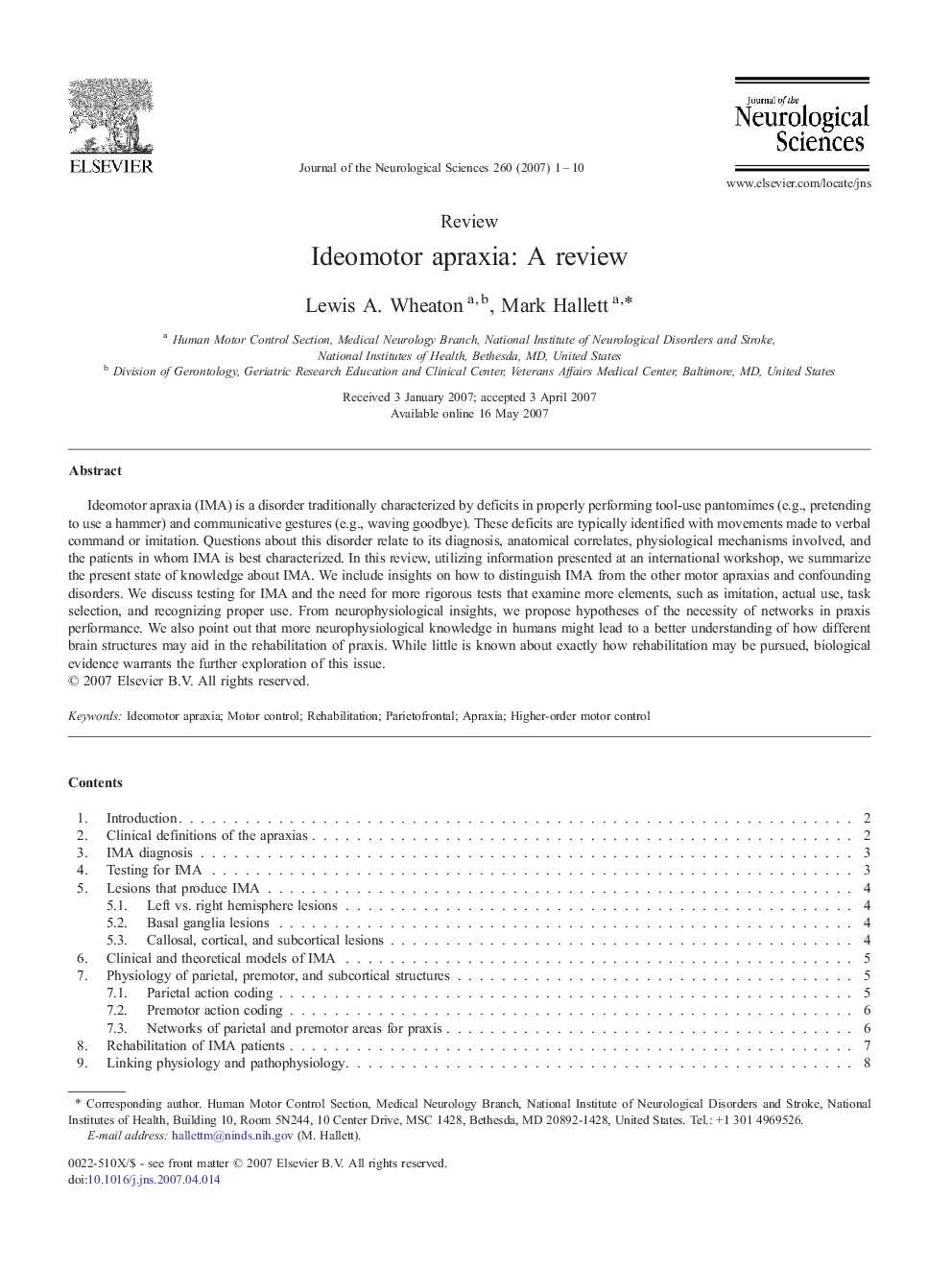| Article ID | Journal | Published Year | Pages | File Type |
|---|---|---|---|---|
| 1916093 | Journal of the Neurological Sciences | 2007 | 10 Pages |
Ideomotor apraxia (IMA) is a disorder traditionally characterized by deficits in properly performing tool-use pantomimes (e.g., pretending to use a hammer) and communicative gestures (e.g., waving goodbye). These deficits are typically identified with movements made to verbal command or imitation. Questions about this disorder relate to its diagnosis, anatomical correlates, physiological mechanisms involved, and the patients in whom IMA is best characterized. In this review, utilizing information presented at an international workshop, we summarize the present state of knowledge about IMA. We include insights on how to distinguish IMA from the other motor apraxias and confounding disorders. We discuss testing for IMA and the need for more rigorous tests that examine more elements, such as imitation, actual use, task selection, and recognizing proper use. From neurophysiological insights, we propose hypotheses of the necessity of networks in praxis performance. We also point out that more neurophysiological knowledge in humans might lead to a better understanding of how different brain structures may aid in the rehabilitation of praxis. While little is known about exactly how rehabilitation may be pursued, biological evidence warrants the further exploration of this issue.
